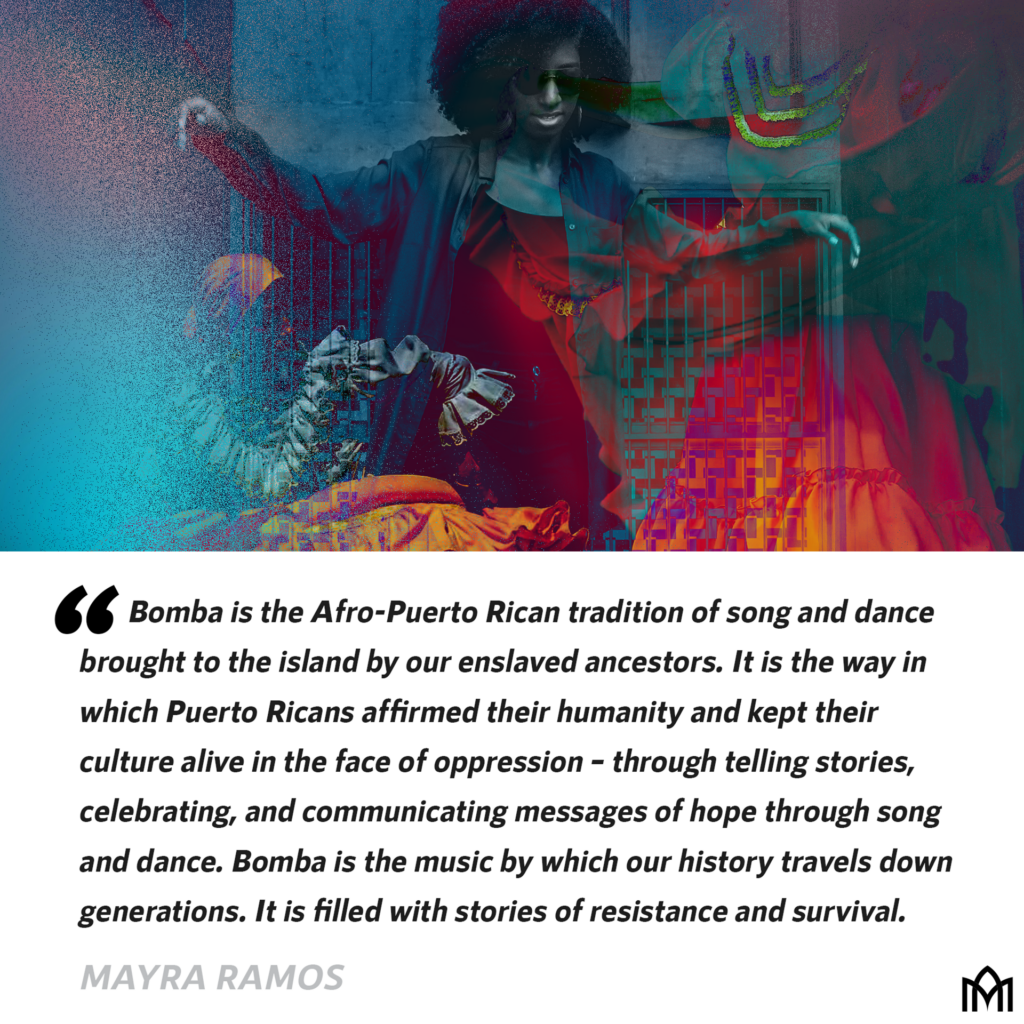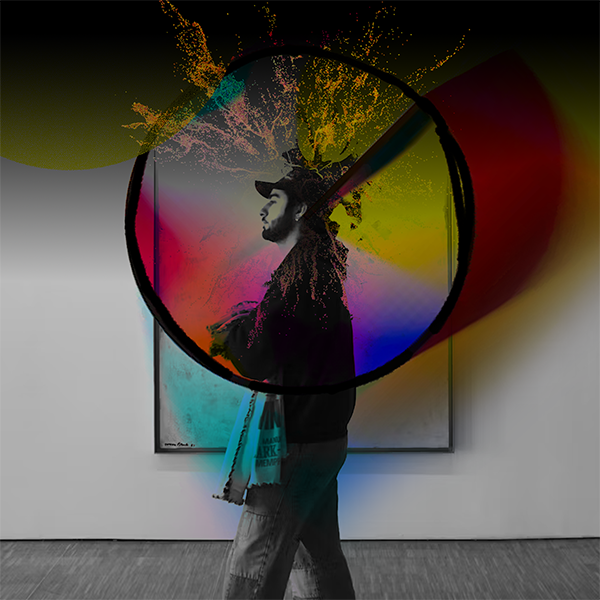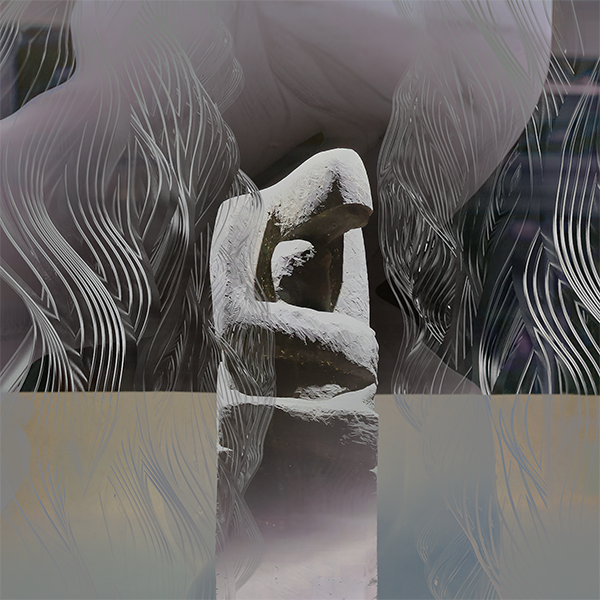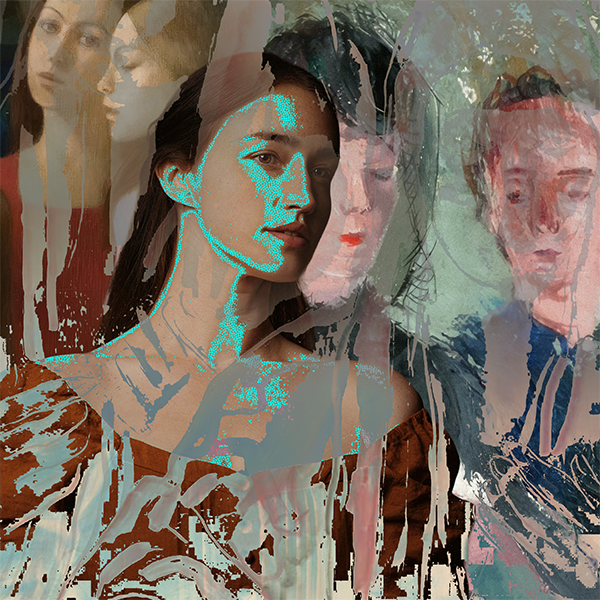The Theology of a ‘Bombera’
The Humboldt Park neighborhood of Chicago is home to a multi-generational community of Puerto Rican families who arrived in the city decades ago from the island and built lives here. Nestled in this neighborhood is a space that has been formational to me this past year: “La Escuelita Bombera de Corazon,” a hub for the community to come and learn “Bomba.” Bomba is the Afro-Puerto Rican tradition of song and dance brought to the island by our enslaved ancestors. It is the way in which they affirmed their humanity and kept their culture alive in the face of oppression – singing stories, celebrating, and communicating messages to one another through the music. Bomba music is one of the ways our history, in its fullness, is passed down through the generations. It is filled with stories of resistance, survival, and resilience.
Deriving from the Congolese word “bambula,” meaning to ‘re-remember’ or to “remember again” who you are, the origin of bomba’s meaning causes me to wonder if this is why I felt drawn to this space. Perhaps this pull was the activation of something in me that was always present, but buried within – a history that I simply needed to remember again. This is not to say that I didn’t have my reservations. I think as church kids we tend to be handed a lens that says the sacred is black and white – this is holy, but that is not. The fear of the latter tends to cause us to abandon anything and everything that does not neatly fit into our faith box. I let myself take a chance to step outside of my comfort zone, and it is here, in this liminal space, where I have learned that it does not have to be one at the expense of another. Instead of laying down my theology, I get to see it come alive before my very eyes.
On that note, allow me to share with you some reflections on my Christian theology through this lens of learning bomba: the theology of a bombera (bomba dancer).
Bomba is the Afro-Puerto Rican tradition of song and dance brought to the island by our enslaved ancestors. It is the way in which they affirmed their humanity and kept their culture alive in the face of oppression. (1/2) Share on X
Through singing stories, celebrating, and communicating messages to one another, bomba music is one of the ways our history is passed down through the generations. It is filled with stories of survival and resilience. (2/2) Share on X
Pónte falda
One of the first things we are taught is that you never let your falda (bomba skirt) touch the floor but put it on over your head. We take hold of the skirt hem and bring it up to our waist securely in hand. Putting on the skirt for the first time, I remember our teacher walking down the line of women, trying to swat it from our grip, testing to make sure we had a firm hold on our skirt. As I sit with this imagery I can’t help but picture Proverbs 31 and how it describes the virtuous woman “clothed with strength and dignity” (Proverbs 31:25a who “laughs without fear of the future,” (Proverbs 31:25b) a woman who “girds her loins with strength and makes her arms strong” (Proverbs 31:27). For me, my “falda” reminds me that femininity by no means implies weakness; on the contrary, it is a sign of strength. I think of the glowing women who I watch dance at La Escuelita. They have their fair share of burdens to carry yet dance their way through it with grace. I think of how we hold tight to that hem, not allowing for anyone to swat our dignity away from us. We suit up, girding ourselves like soldiers going into battle. As we move our bodies in dance, we are being strengthened in embodied resistance, smiling in the face of every force opposing our very existence.
‘A Bombear: Postura y llamada’
Before any beat is played, we hold a starting position called “postúra y doblando rodillas,” which is when you are slightly lowered bending your knees as you keep a straight spine, hands on your hips in authority. It is our power stance that prepares us to begin. This is the posture I want to have as I navigate life. There is something to be said of confidence and humility going hand in hand. Knowing that, when we bend the knee in prayer, reverence, or worship to God, we do so knowing that we are invited to confidently approach God. As we go forth into the world as children of God, we do so like a dancer with her hands on her hips.
Skirt on, stance set: it’s time to dance. In bomba we learn to recognize la llamada, the call that the drummer gives, signaling what beat is about to be played so that we can dance accordingly. There are different bomba rhythms: sica, yuba, cuembe, holande, and seis corridos. Each one symbolizes a different emotion, such as celebration or lament.
Sometimes we dance in unison as a community, and other times moving around the room freely, learning to dance around one another so as not to collide. This practice teaches me to recognize and discern the times; that seasons of life may change but that we can learn to identify them and move with grace to the beat of that particular season. We are to listen for God’s llamada and be prepared to dance accordingly. In doing so, we are invited to remember that God created us to be in community, for we do not dance alone.
As church kids we tend to be handed a lens that says the sacred is black and white – this is holy, but that is not. The fear of the latter tends to cause us to abandon things that do not neatly fit into our faith box. (1/2) Share on X
It is here, in this liminal space, where I have learned that it does not have to be one at the expense of another. Instead of laying down my theology, I get to see it come alive before my very eyes. (2/2) Share on X
The Elders
I have always told God, “If I ever forget who I am, if I ever need that extra nudge, send the prophets to remind me.” We need prophetic voices in our lives – People who can firmly get you together when you are off your game, as they teach, direct, encourage, or call out instructions. In bomba, this comes to life in the example of the elders who have danced this dance before, fought for it, perfected their craft, and lived. For me, my elder has come in the form of my maestra, Ivelisse “bombera de corazon” Diaz.Though not an elder in age, Ivelisse is wise beyond her years, living out her work. A powerhouse educator who is invested in her community, she is the voice you will hear that commands the room, leading the charge. She is the one who is going to remind you to claim your space and use your voice.
Ivelisse’s voice will pour history into you, reminding you to stand up straight, to move with precision, and to push yourself. She has been a humbling reminder that prophetic voices come in all sorts of packages. They won’t always be a pastor in a suit who makes you ugly cry at an altar call. Sometimes, prophets look like a 5-foot Puerto Rican woman pulling you out of a crowd when you are trying to hide, bringing you to the center to dance, letting you go as the training wheels come off, all while shouting affirmations from the sidelines. Honor these voices as you seek to remain open to the unexpected packages they come in.
‘El Subidór’
I can’t speak about bomba without acknowledging one of the most important elements in the room: The lead drummer or “El subidor.” Communally, they set the tone, while individually their job is a uniquely intricate one. When the community gathers (for what we call a “batey”), everyone is given the chance to go out into the center and dance. When this happens, the dancer approaches the subidor, acknowledging them with a bow, signaling that you are going to dance. At this point, that person will break off from the line of drummers and play along just for you as you dance, supporting you as you communicate through your movements. The subidor does not take over but simply follows you, watching attentively, ready to play the beats while anticipating your next move.
With all reverence and respect, this is how I see God. I start my day acknowledging God, a bow that says “Please come with me as I journey today.” God trusts me to dance, never taking over, yet attentively keeping an eye on me as I navigate life. God reminds me that He is present in the noise and the daily hustle, always focused at the helm. When I take risks and do brave things, I need only look up at my Subidor and be reminded that I am supported.
///
As we close out Hispanic Heritage Month, consider this:
-
- What are the cultural spaces where God in His omnipresence could be inviting you to inhabit?
- What might it look like to embrace all of who you are?
Unapologetically step out into the liminal space where two worlds can in fact collide, and soak it all in. We are beautifully made in the Image of God and we belong to the cultures of our birth.
///
Femininity by no means implies weakness; on the contrary, it is a sign of strength. I think of the glowing women who I watch dance at La Escuelita. They carry burdens yet dance their way through it with grace. (1/2) Share on X
We are to listen for God’s llamada and be prepared to dance accordingly. In doing so, we are invited to remember that God created us to be in community, for we do not dance alone. (2/2) Share on X




